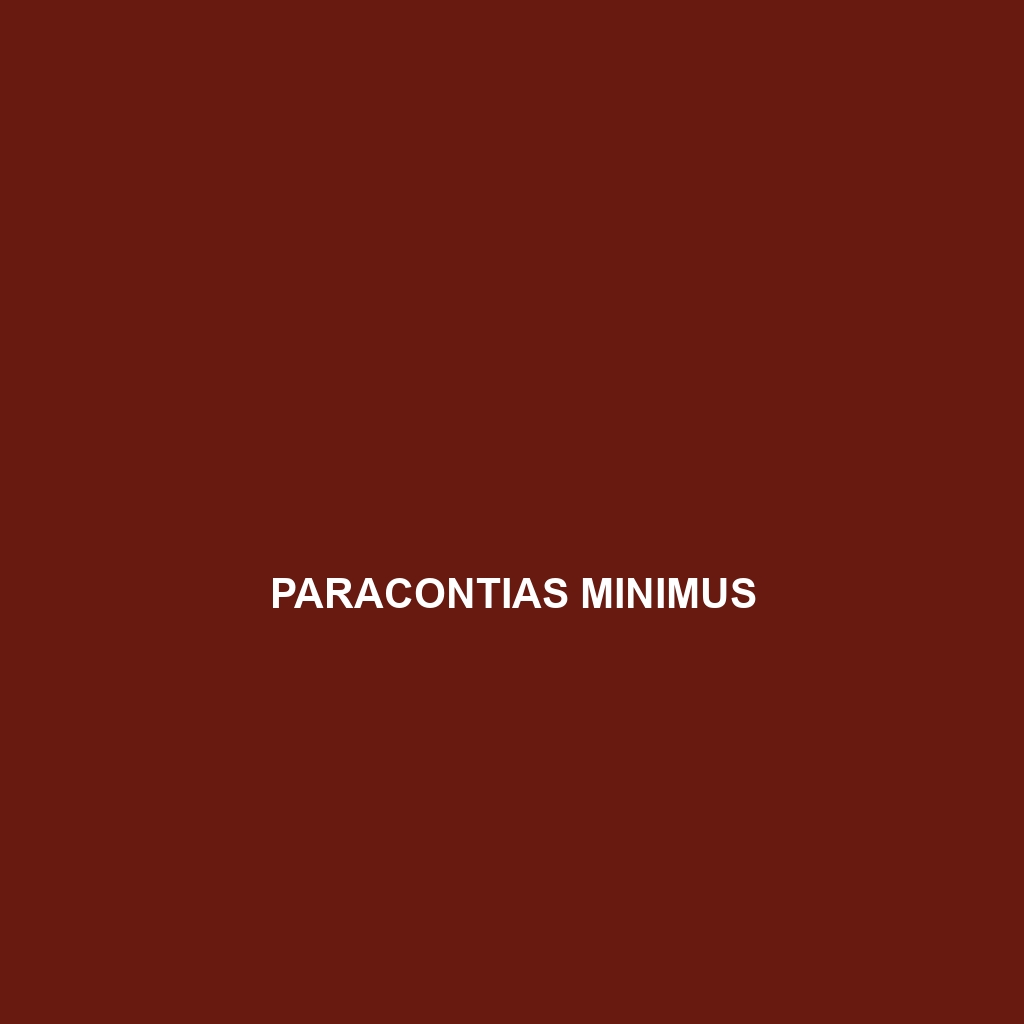Common Name
Paracontias minimus
Scientific Name
Paracontias minimus
Habitat
Paracontias minimus primarily inhabits the lush environments of Madagascar, specifically thriving in areas characterized by humid rainforests and dry deciduous forests. These fascinating reptiles are often located in regions with rich biodiversity, which provides both shelter and a diverse food supply. The climate in these habitats generally features warm temperatures and significant rainfall, enhancing the growth of plant life essential for their survival. Additionally, they are found in subhabitats such as shrubby savannas and even coastal regions that connect to marine habitats. Understanding the intricate ecosystems comprising their habitats is crucial for their conservation.
Physical Characteristics
Measuring approximately 10 to 15 centimeters in length, Paracontias minimus is a small and slender species of skink. Its physical appearance is quite remarkable with a smooth, shiny body that is typically brown or dark gray in color, often adorned with subtle stripes or mottled patterns that serve as camouflage against predators. Unique features of this species include its elongated snout and tiny, reduced limbs, which contribute to its specialized burrowing abilities. Overall, their distinct morphology is key to their adaptation in a densely vegetated habitat.
Behavior
Paracontias minimus exhibits fascinating behaviors that are essential for its survival. This species is primarily fossorial, meaning it spends much of its life underground or among leaf litter. They are known for their nocturnal behavior, engaging in most of their activities, such as foraging and mating, during the cooler hours of the night. Social interactions among individuals are minimal, but aggressive displays can occur during mating season. During the day, these skinks seek refuge in burrows or under logs, where they remain hidden from potential predators.
Diet
The diet of Paracontias minimus mainly consists of small invertebrates, making them primarily insectivorous. Their feeding patterns include hunting for ants, beetles, and other small organisms in the leaf litter or soil. They use their keen sense of smell to detect prey and are adept at digging through the earth to access hidden food sources. This specialized diet makes them integral to maintaining the balance of insect populations within their ecosystem.
Reproduction
The reproductive cycle of Paracontias minimus is not fully documented, but it is believed to follow a seasonal pattern aligned with environmental cues. Mating typically occurs during the warm rainy season, which provides optimal conditions for hatchlings. Female skinks lay eggs in damp soil or hidden under foliage, ensuring moisture retention for developing embryos. The gestation period is estimated to last about two months, after which the hatchlings emerge. Parental care is largely absent, as the offspring are independent from the moment they hatch.
Conservation Status
The conservation status of Paracontias minimus is currently classified as vulnerable by the International Union for Conservation of Nature (IUCN). This species faces significant threats from habitat destruction due to deforestation and land conversion for agriculture. Conservation efforts are necessary to preserve their natural habitats, which include the establishment of protected areas and the promotion of sustainable land-use practices to mitigate the impact of human activities.
Interesting Facts
One of the most intriguing aspects of Paracontias minimus is its ability to rapidly burrow into the ground, an adaptation that provides effective protection against predators. Additionally, their small size and unique coloration allow them to blend seamlessly with their surroundings, minimizing visibility to both prey and predators alike. Another fascinating fact is that this species exhibits a unique defensive behavior; when threatened, they can emit a foul-smelling secretion to deter potential threats, highlighting their remarkable survival strategies.
Role in Ecosystem
Paracontias minimus plays a vital role in its ecosystem, particularly through its contribution to controlling insect populations as a predator. By feeding on small invertebrates, they help maintain a healthy balance within the soil ecosystem, which is crucial for plant health and nutrient cycling. Additionally, their burrowing activity aerates the soil, facilitating better water infiltration and root growth for surrounding vegetation. As part of the complex web of life in Madagascar, this species contributes significantly to the biodiversity and ecological stability of their habitats.
